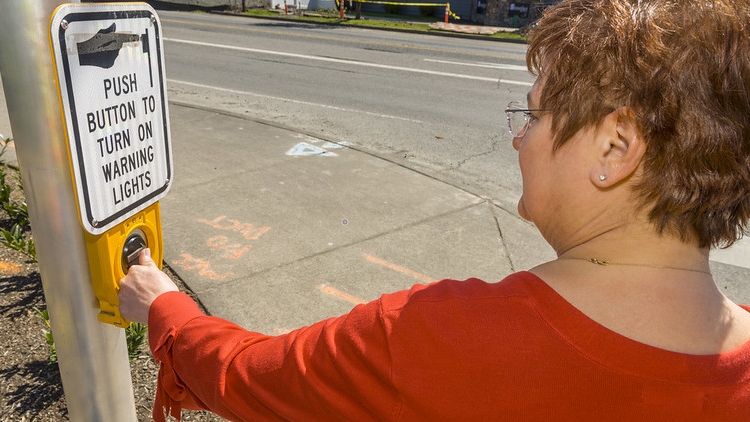
Accessible pedestrian signals and pushbuttons are accessibility enhancing features for signals and pedestrian activated warning systems. The location of pedestrian signal equipment should be determined in conjunction with the curb ramp and crosswalk layout. Crosswalks are an extension of the walkway to provide an accessible path to cross a roadway. Review the Engineering for Accessibility Page for additional information on design requirements and procedures for affected elements.
You must evaluate the existing pedestrian activated pushbuttons for accessibility triggers as well as the surrounding areas for reach, range and landing requirements, when a project includes any of the following elements.
- Signalized intersections
- Rectangular rapid flashing beacons
- Pedestrian hybrid beacons
Accessible pedestrian pushbuttons are required when traffic signal work is an alteration (maintenance activities are described in MG144-03). Audible pedestrian signals (APS) provide information in a non-visual format such as audible tones, speech messages, and/or vibrating and tactile surfaces.
- Signal operation approvals and procedures
- Product evaluation and approvals
- Cabinet prints and signal drawing archives
ODOT often receives requests to install audible pedestrian signals at signalized intersections from local jurisdictions and from individuals who need the non-visual format. Follow the Traffic Signal Policy and Guidelines for evaluating audible pedestrian signal installations. Utilize the ADA Accessibility Request Form for requests for audible pedestrian signals from an individual.
The following documents explain the requirements related to accessible pedestrian signals and pushbuttons.
Technical Requirements
Please note, the following guidance has been incorporated into these manuals:
- TR16-01(B), Traffic Signal Design Manual.
- TR16-02(B), Traffic Signal Design Manual.
- RD21-01(B), Traffic Manual.
- MG 144-03, Highway Design Manual Appendix J.
Standards
- Standard Drawings, Traffic TM 400 Series - Signals.
- Standard Drawings, Traffic TM 240 - Crosswalk Closure Detail.
Forms